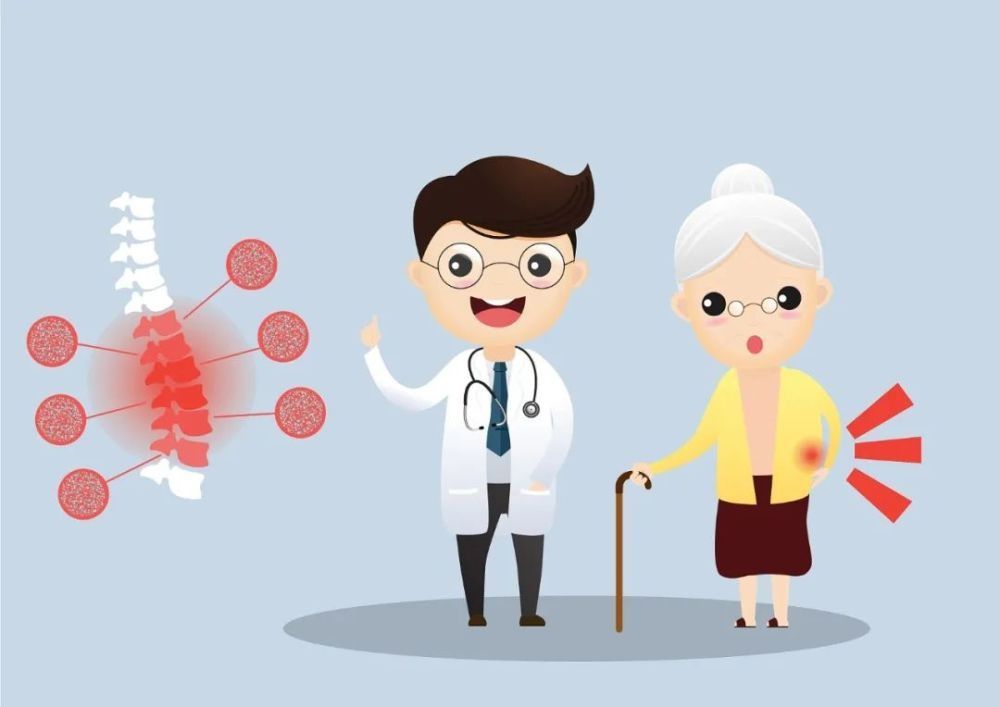
For cancer patients, both osteoporosis and bone metastases are common, and the symptoms are very similar, so it is easy to confuse them. I believe that after reading this article, you will have a new understanding of osteoporosis and bone metastasis, and identify whether it is a small problem or a big threat in time!
What are the causes of osteoporosis in cancer patients?
Osteolytic bone metastases
Patients with malignant tumors are prone to osteoporosis at the same time as bone metastases, because cancer cells directly destroy the mineral matrix of the bone, and indirectly stimulate the Osteoclasts can strengthen osteolysis, disrupt the dynamic balance of bone metabolism, and eventually lead to excessive loss of bone mass, resulting in increased bone fragility, easy to cause fractures, bone pain and deformity, and bring greater pain to patients.
Aging
Osteoporosis is an age-related bone disease. In my country, the prevalence of osteoporosis in people over 50 years old is 20.7% in women and 14.4% in men [1]; the prevalence of osteoporosis in people over 60 years old is significantly higher.
This is because with the increase of age in adulthood, bone formation and bone resorption are in a negative balance, and the imbalance of bone remodeling leads to bone loss, which is easy to cause osteoporosis.
Endocrine therapy
Chemotherapy combined with endocrine therapy may cause severe osteoporosis. When the estrogen level of female breast cancer patients is greatly reduced, the bones lose the regulation of estrogen, and the bone mass and bone density decrease further, which may lead to osteoporosis.
Life factors
Tumor patients often have poor appetite, weak body, insufficient nutrition obtained through food, and decreased physical activity, resulting in decreased muscle strength and endurance, and bone density. reduce.
The study shows that the incidence rate of people who never participate in physical exercise is 7.867 times that of people who regularly participate in physical exercise[2].
How to prevent osteoporosis in cancer patients?
Eating a Balanced Diet
A balanced diet is the foundation of maintaining healthy bones. A balanced diet that is adequate in calcium, low in salt, moderate in protein, and rich in vitamins provides key micronutrients (vitamins and minerals) and macronutrients (protein, fat, and carbohydrates) that provide the building blocks for and renew bone. required energy.
What foods can you eat to supplement calcium?
In addition to milk containing high calcium, beans, nuts, green vegetables, fish, crabs, clams, etc. in seafood, especially small shrimp, are rich in calcium.
In addition, proper outdoor activities and exposure to a certain amount of sunlight can convert vitamin D into active vitamin D in the human body to assist the absorption of calcium.
Regular physical activity
Exercise can not only increase bone density, improve bone remodeling, but also increase muscle strength and endurance, improve joint mobility, improve gait and balance, improve body, reducing the incidence of falls and fractures.
Exercise styles include weight-bearing exercises, resistance exercises, posture training, low-intensity aerobic training, balance exercises, and flexibility and range of motion exercises.
Good Living Habits
Avoid heavy drinking, smoking, excessive consumption of carbonated beverages and coffee, and excessive weight loss or obesity.
Responsible editor: Ren Jingya